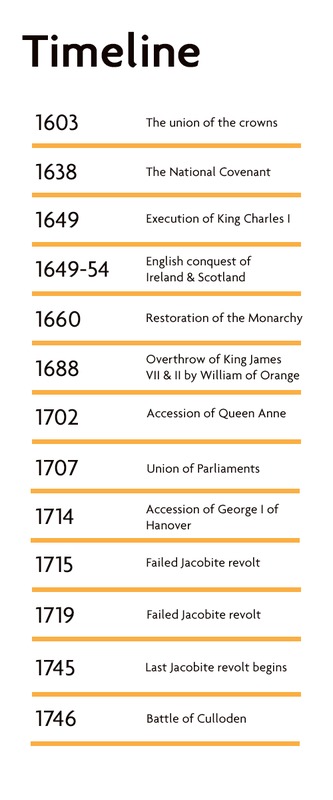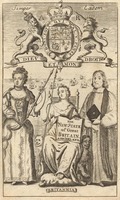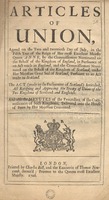Introduction

Drawing exclusively on the University of Aberdeen's historic collections, the exhibition explores the political, religious and economic factors that helped create the new kingdom of Great Britain, a process which was far from inevitable and not particularly popular, north or south of the border. Union between Scotland and England was proposed on numerous occasions, and in various forms, throughout the sixteenth and seventeenth centuries. The Union of the Crowns in 1603, under James VI & I, offered one solution, although ongoing political instability undermined the authority of the Stuart dynasty.
For much of the seventeenth century it was the Scots rather than the English who advocated the idea of union. In the early 1700s, however, political developments at home and changes in the European balance of power persuaded England's leaders of the need for union with the Scots. English and Scottish anxieties over the Protestant nature of the monarchy, allied to a Scottish desire for access to England's economy, finally secured the Union of Parliaments in 1707.
The exhibition also examines the divisive impact of these developments on the burghs of Aberdeen, including both colleges (King's and Marischal), before concluding with the final victory of the Union settlement through the destruction of the Jacobite army at Culloden in 1746.

Frontispiece from Brittania fortior (London, 1709)
This 1709 illustration of Britannia, flanked by the dual figures of Crown and Church, personified the new state of Great Britain and Ireland. It is a typical representation from the period. Behind her, a seascape with a fleet of ships emphasised Britain's naval supremacy. Britannia would become increasingly assocaited with the navy and remains, to this day, a potent symbol of British nationhood.

Articles of Union
Articles of the Treaty of Union agreed on by the Commissioners of both Kingdoms, 22 July 1706
The provisional articles of union were agreed by comissioners representing Scotland and England during negotiations in Londn between April and July 1706. The majority of Scots were hostile to the proposals, while aspects of the initial agreement alienated powerful interest groups in Scottish society. The Kirk obtained a major concession in the form of separate legislation, An Act for securing the Protestant Religion and Presbyterian Church Government, which was designed to secure its status in Scotland after the union took affect. As the Edinburgh parliament debated the articles over the last three months of 1706, a number of other alterations were made to the original agreement, including a number of tax-breaks on importnat Scottish products like salt.



